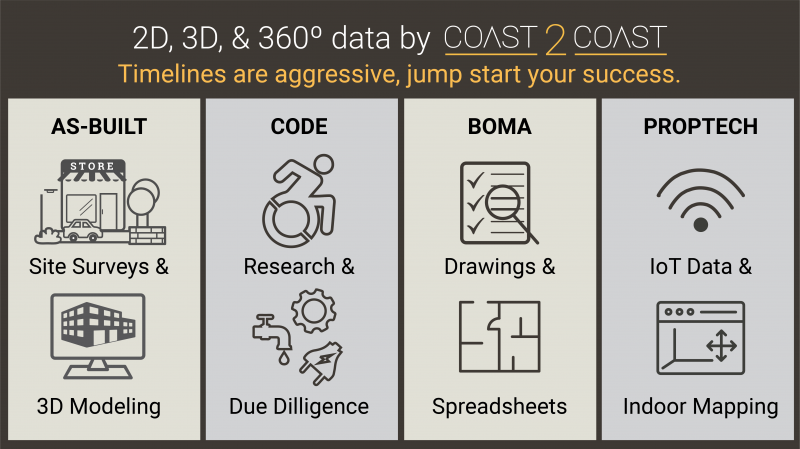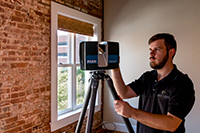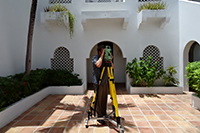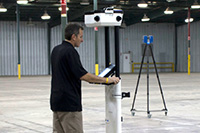Developers and retailers are seeing the vast impact that the Internet of Things (IoT) is having on the industry. Mobile technology and apps have made it easier than ever for developers and entrepreneurs to provide essential technology to commericial property owners and operators. Using these tech innovations to create “smart buildings” is allowing developers and retailers to create unique environments and personalized service. Key topics for developers when implementing this approach as part of their offering include Placemaking, Flex Space/Mixed Used and Proptech.
Asbuilt Data: Developers use IoT to Align Inventory & Expectations
Property Technology
Requirements for interconnectivity often require renovation. Developers must facilitate data sharing between devices and platforms such as Bluetooth, RFID, RTLS, Motion Sensors, Cashless Payment, and Entry/Exit Security.
INCLUDE INNOVATION AT EVERY STAGE OF DEVELOPMENT.
Financial Technology (FinTech), Construction Technology (ConTech), and Commercial Real Estate Technology (CRETech) are changing the way real estate is bought, leased, sold, built, monitored, analyzed and managed.
Placemaking Trends
Purposeful Urban Design planning for live-work-play lifestyles that capitalizes on a local community’s assets and potential. Combining retail, office, and community activity, placemaking provides great spaces and great engagement.
PLAN FOR PEOPLE AND PLACES, GET PEOPLE AND PLACES.
As more people turn to technology for their daily transactions, designers are harnessing the principles of placemaking to shape mixed-use environments. The spaces between the buildings of mixed-use projects are key to creating a sense of place.
Flexible/ Mixed-Use Space
Mixed-use developments combine a range of land uses in a project. Whether multiple single-use buildings or multiple uses in the same building, they accommodate healthy lifestyles, functionality, and productivity.
FOSTER LAND USE INTEGRATION, DENSITY, AND COMPATIBILITY.
Incorporating revenue-producing uses (such as retail, commercial, residential, and entertainment) and lifestyle/community needs (walkable hub and uninterrupted pedestrian connections) makes mixed-use and adaptive re-use developments portfolio must-haves.
Aligning Inventory with Expectations
Existing structures are often in established growth areas with significant population density. Rather than demolishing existing structures that have outlived their originally intended use, adaptive reuse projects offer historic preservation, green renovation, and unique design opportunities.

These projects often become mixed-use developments where leasing, public space planning, tenant build-out, and connectivity are chief concerns.
Given the triple-bottom-line benefits—social, environmental, and financial—for all stakeholders, it makes good business sense to facilitate data capture and as-built site survey documentation with other development best practices from the start of the development life cycle.
Coast 2 Coast is the industry leader in providing the data that helps project stakeholders observe existing conditions during the planning phase before the transformation begins. Here’s how:
Coast 2 Coast offers asset management data in 2D, 3D, and 360º to make renovation and redevelopment run smoothly from the beginning.
Survey data provides a schematic of IoT devices within the building footprint which integrates into industry software platforms and tracking systems.
The digitized building, technical data on access/usage/performance, and the IoT sensor and data feed information provides real-time visibility in our “Digital Twin” solution.





